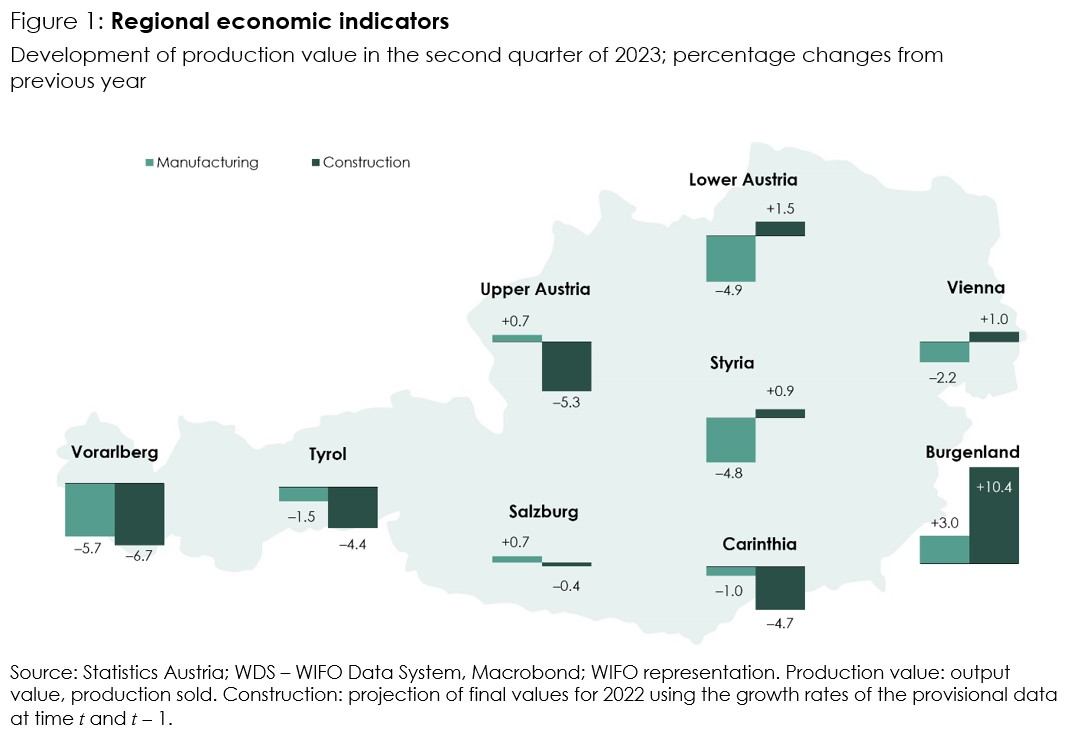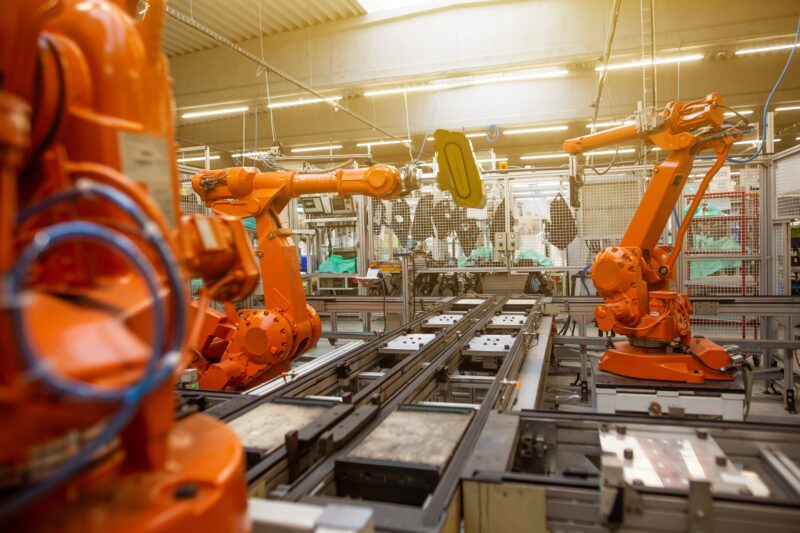
Slight Downturn in the Regional Economy
Declining industrial production in most federal provinces
The downturn in Austrian industry was already apparent in the first half of this year. According to WIFO Flash Estimates, real value added in manufacturing fell by a further 0.5 percent in the third quarter compared to the previous quarter, representing a decline of 1.5 percent compared to the previous year. In six federal provinces, output also fell in nominal terms. The strongest declines were recorded in three federal provinces where the production of tangible goods is of above-average importance: in Vorarlberg it shrank by 5.7 percent, in Lower Austria by 4.9 percent and in Styria by 4.8 percent, whereby in Vorarlberg the majority of the slump was due to a single sector, the manufacture of metal products. In the WIFO-Konjunkturtest (business cycle survey) in October, domestic industrial companies in all federal provinces continued to take a negative view of the future business situation. Nevertheless, employment in industry proved to be surprisingly resilient in the second quarter; with the exception of Vorarlberg, it rose slightly in all federal provinces.
Construction sector deteriorates further
The Austrian construction industry reported even stronger decreases in the second quarter of 2023 than in the previous quarter. After 3.6 percent in the first quarter, real construction investment fell significantly by –7.1 percent in the second quarter compared to the previous year, according to quarterly figures from Statistics Austria. The downturn was driven in particular by building construction, where all federal provinces recorded clearly negative growth rates in sold production: in Burgenland (–20.7 percent), Upper Austria (–16.4 percent), Tyrol (–14.2 percent) and Carinthia (–13.2 percent) even in the double-digit range. However, total construction output also fell in some federal provinces or, with the exception of Vienna and Burgenland, developed less dynamically than in the previous quarter. Neither the WIFO Economic Outlook nor the surveys conducted as part of the WIFO-Konjunkturtest point to a recovery in the construction industry in the coming months.
High demand for tourism despite inflation
Austrian tourism developed more favourably than expected in the first five summer months of 2023 in view of the price environment and uncertainties resulting from the geopolitical upheavals. Arrivals reached a record high of 22.7 million, while the number of overnight stays was higher than the comparable figures for the past 40 years. At regional level, the number of overnight stays also exceeded the pre-crisis level in almost all federal states in the second quarter of 2023. Vienna and Lower Austria, which are the exceptions here, recorded the strongest growth rates compared to the previous year, however. Recent guest surveys give an optimistic outlook for demand in winter 2023-24, although this will also depend on the weather and snow conditions in the ski resorts.
Employment in services and manufacturing (still) resilient
The regional labour markets, for which data is already available for the third quarter of 2023, reflect weaker momentum, but are still robust in view of the economic situation. Employment continued to develop positively in all federal provinces, with the strongest growth impetus coming from services and the manufacturing sector. Unemployment figures increased everywhere with the exception of Tyrol, and were highest in Styria, Upper Austria (+7.8 percent in each case) and Vienna (+7.0 percent). In all federal provinces, however, the trend in unemployment contrasts with a growing labour supply.


























